

The Marvelous Seamounts of the Southeast Pacific
source link: https://nautil.us/the-marvelous-seamounts-of-the-southeast-pacific-542868/
Go to the source link to view the article. You can view the picture content, updated content and better typesetting reading experience. If the link is broken, please click the button below to view the snapshot at that time.
The Marvelous Seamounts of the Southeast Pacific
An expedition to a little-explored region returns with deep-sea wonders.
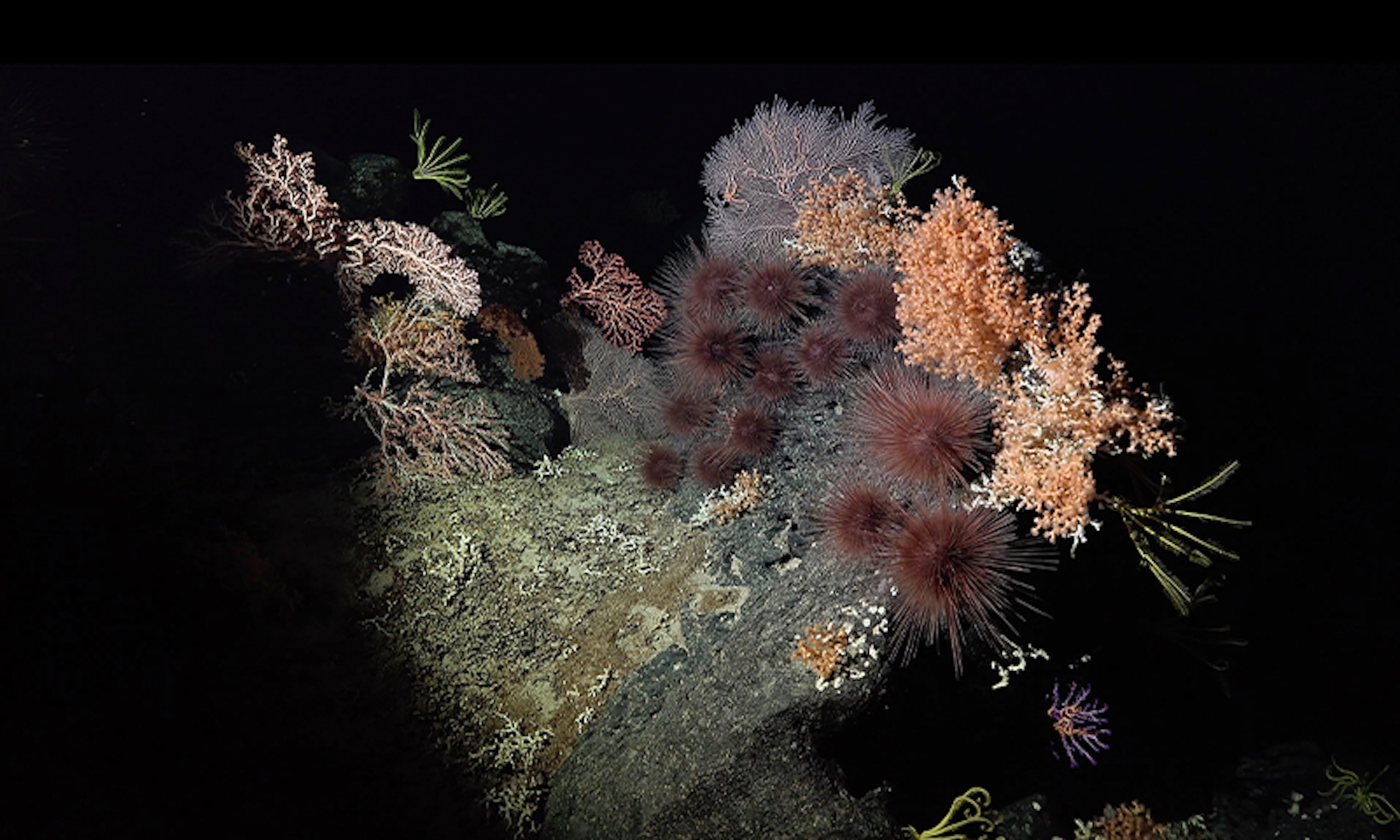
The underwater mountains of the Nazca and Salas y Gómez ridges are a world unto themselves. Running for 1,800 miles off the coast of Peru, they are isolated by a vast low-oxygen zone, the depths of the Atacama Trench, and the powerful Humboldt Current—an isolation that allowed evolution to follow its own trajectory.
“Almost half of the species living there live only there,” says Javier Sellanes, a marine ecologist at Chile’s Universidad Católica del Norte.

DEEP-SEA NURSERY: Nestled in the arms of this spiraling coral is a clutch of fish eggs. “We saw these eggs on many corals on numerous seamounts,” says Erin Easton, a biological oceanographer at the University of Texas Rio Grande Valley. Nobody yet knows what species they belong to, nor why their parents chose that delicate cradle. Perhaps the eggs are safer resting there than drifting freely. Credit: ROV SuBastian / Schmidt Ocean Institute.
Until recently, however, researchers had only surveyed the upper reaches of the region’s seamounts. The creatures and communities living farther down their slopes were almost entirely unstudied.
To learn more, Sellanes and a team of scientists set out earlier this year aboard the Schmidt Ocean Institute’s Falkor (too) research vessel, equipped with a remotely operated submersible and all the instrumentation they would need to explore the depths. In the course of mapping more than 20,000 square miles of seafloor and discovering four seamounts, the researchers found a veritable deep-sea wonderland: millennia-old corals, watermelon-sized urchins, fish adapted for walking, and more than 100 species thought to be new to science.
All this was only a glimpse of what Sellanes calls “one of the least-explored areas of the ocean”—but it was enough to see that the region is as extraordinary at depth as it is near the surface.
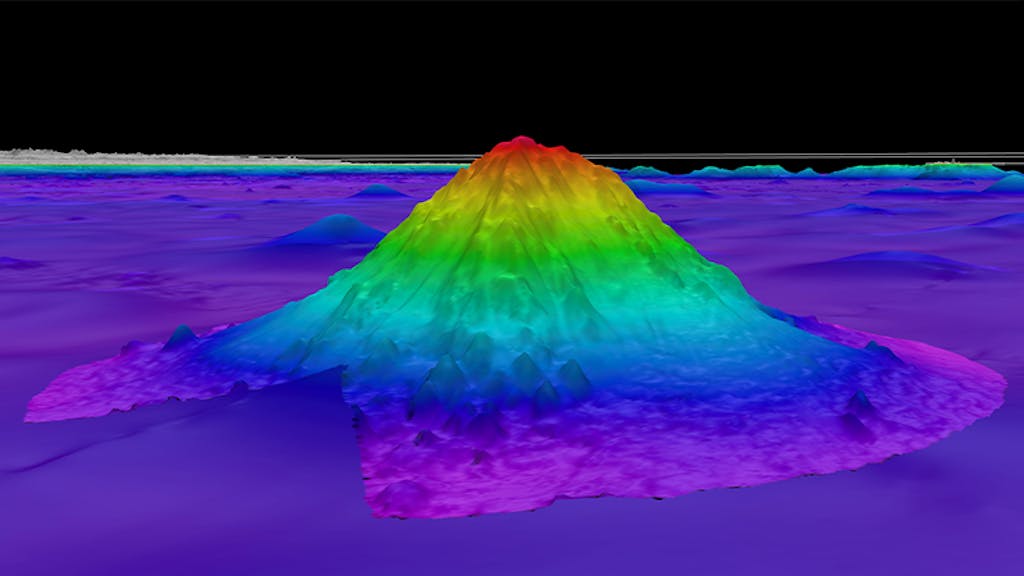
ONE OF A KIND: At roughly 11,600 feet tall, the informally named Solito is the tallest of four seamounts mapped by the researchers. Located halfway between the Nazca and Salas y Gómez ridges, Solito has a “perfect combination of the faunas of both,” says Sellanes, making it a truly unique place. Credit: Schmidt Ocean Institute.
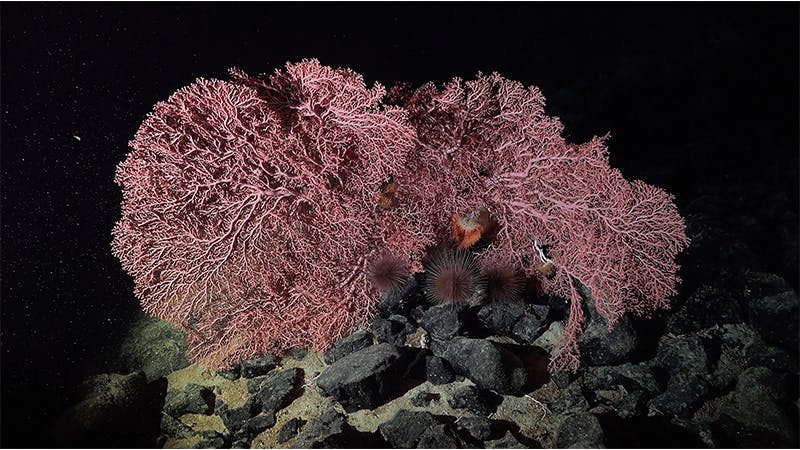
OLD GROWTH: The cactus urchins at the base of this coral are about the size of a cantaloupe. That gives a sense of how enormous the coral is—and given the extremely slow growth rates of deep-sea creatures, it could be more than 1,000 years old. Credit: ROV SuBastian / Schmidt Ocean Institute.

LIFE FROM ABOVE: Though this siphonophore is a midwater dweller, it and other pelagic creatures are important to seafloor life that will ultimately be nourished by their falling bodies. Credit: ROV SuBastian / Schmidt Ocean Institute.
Though the extraordinary communities the researchers observed are thousands of feet below the ocean’s surface, their lives are intimately connected to—and threatened by—what happens above.
Lost or discarded fishing gear eventually falls to the seafloor. Trawling can destroy in a few hours habitats that took millennia to form. Seabed mining may bring not only localized destruction but long-distance pollution by noise and sediment. Climate change alters the temperature and composition of even deep-sea waters.
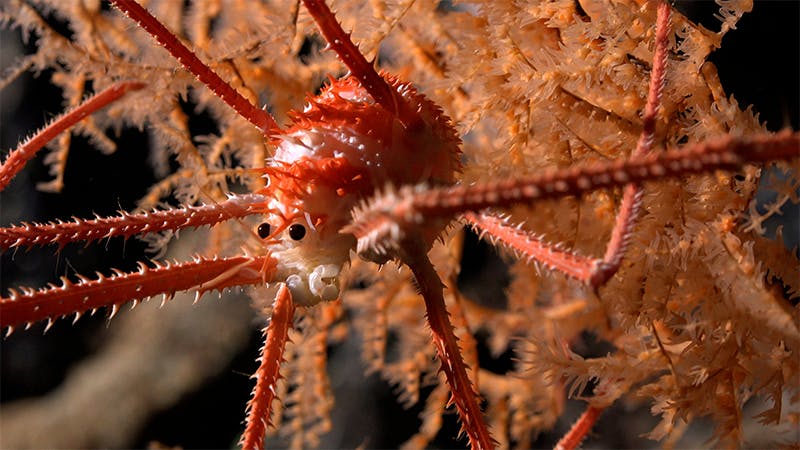
FIRST IMPRESSIONS: This squat lobster is one of more than 100 potentially new species encountered on the expedition. Formal comparisons with known species have yet to be made, but Easton and the expedition’s other researchers are confident. “We always expected to find a lot of new species,” Easton says, “but the number we found is astounding.” Credit: ROV SuBastian / Schmidt Ocean Institute.
Sellanes hopes the information gathered on his expedition will ultimately be used to better manage and protect the seamounts of the southeast Pacific. Doing so can be a matter of human self-interest, notes Sellanes: Commercially important fisheries may depend on species whose life cycles are tied to those seamount communities. But of course the argument is not only about utility.
“A lot of these species have small ranges. They’re endemic to the region,” Easton says. “If you lose them, how will they be replaced?” ![]()
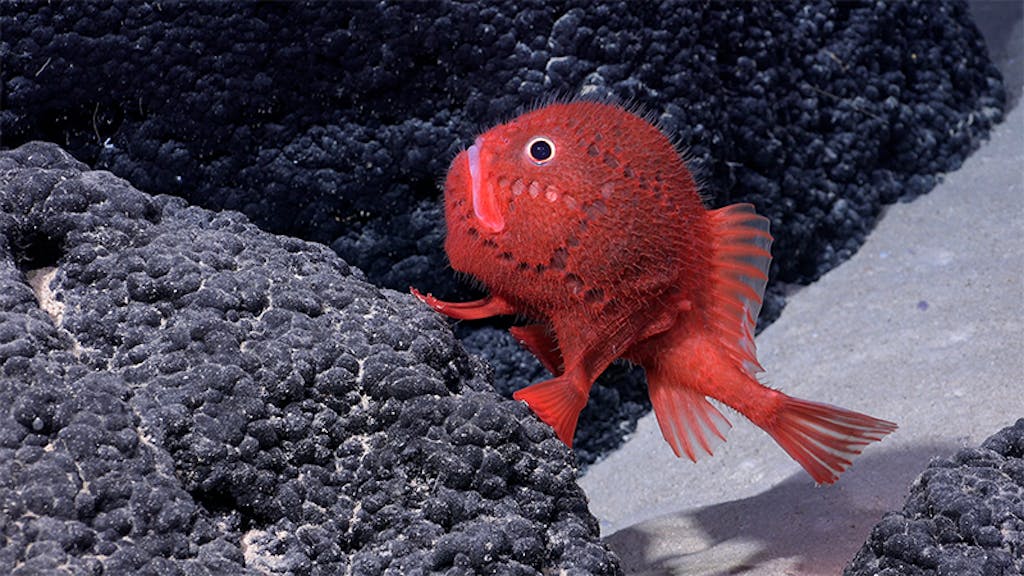
DEPTHS OF SENSITIVITY: “We saw an amazing variety of fish in this genus and related genera,” says Easton of the so-called sea toads, formerly known as Chaunacops. As befits species whose home waters are almost perfectly still and lit only by bioluminescent creatures, the fine hairs covering Chaunacops are likely part of an exquisite sensory system capable of detecting infinitesimal changes in water pressure and even electricity. Credit: ROV SuBastian / Schmidt Ocean Institute.
Lead photo: Several different kinds of corals are illuminated by the submersible’s beams. Their bodies provide habitat and protection for many other creatures, including these cactus urchins, and their colonies are the foundation of entire seamount assemblages. Credit: ROV SuBastian / Schmidt Ocean Institute.
-
Brandon Keim
Posted on April 3, 2024
Brandon Keim (Substack | Instagram |Twitter | Mastodon) is a freelance journalist and contributing editor at Nautilus. His new book, Meet the Neighbors, explores what the science of animal intelligence means for how we understand and live with the wild creatures around us.
Get the Nautilus newsletter
Cutting-edge science, unraveled by the very brightest living thinkers.
Newsletter Signup – In Page Mobile
Email: *
Captcha
If you are human, leave this field blank.
Recommend
About Joyk
Aggregate valuable and interesting links.
Joyk means Joy of geeK